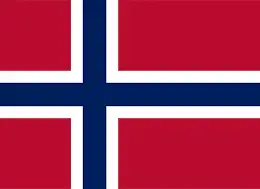Double color board is smoother, finer and more stable for laser engraving than many other materials. We can make many inspiring engraving works from this kind of material. In this episode, ranging from image process skills to parameter settings, let our laser veteran reveal the tricks and tips in details and overall.
Ready to engrave plastic sheets
Plastic sheets crafted from ABS material possess remarkable qualities such as impact resistance, heat tolerance, and low-temperature endurance. Their ease of processing and dimensional stability make them a staple in various industries, including architectural decoration, exhibition displays, advertising, and signage production. They serve as the base material for crafting signboards, guide signs, lightboxes, and other signage items. In this blog post, we will delve into the fascinating world of utilizing laser technology for engraving and cutting these plastic sheets.
Understanding Plastic Sheets and Their Composition:
ABS-based plastic sheets are manufactured through techniques involving silk-screen painting drying or the compression of metallic solidifications like gold or silver. These processes result in a unique form of flexible decorative material, offering a myriad of possibilities for creative applications.
Introduction to Laser Engraving Plastic Sheets:
Standard plastic sheet specifications often fall within the range of 600x1200mm, with variations such as 600x900mm available from certain brands. These sheets are commonly utilized for various signage and badges due to their consistent coloring, clear patterns, and durability.
Categorization and Compatibility of Plastic Sheets for Laser Engraving:
Plastic sheets can be categorized into two main types: those suitable for mechanical applications and those specifically designed for laser engraving. While some mechanically applicable sheets can be used for laser engraving, the latter exhibit distinct characteristics, featuring a thinner surface color layer (<0.1mm). When purchasing plastic sheets for laser engraving, consulting the dealer or conducting a trial with a small piece is advisable. Generally, sheets with very thin surface colors are more suitable for laser engraving, while thicker surface colors may require multiple engraving sessions for optimal results.
Optimal Techniques for Engraving and Cutting:
Laser engraving Plastic sheets offer the best results, displaying pronounced contrast and distinct edges. Avoiding thicker-surfaced mechanical sheets is recommended; however, if used, reducing laser power or conducting multiple engraving sessions might be necessary. Cutting plastic sheets should be done cautiously to prevent melting traces, especially when using laser-engraved sheets. For mechanical sheets, cutting to a 50% depth followed by manual breaking and edge smoothing with sandpaper is advised.
Laser Engraving Plastic Sheets Setting Tips
To carve good transparent colored plastic sheets, find a picture with high contrast and a prominent main body.
The parameters of engraving and cutting of laser engraving plastic sheets are different.
Shallow engraving is suitable for a high speed of 1000mm/s, 15 low power. And weak air blowing is important to ensure clear and clean engraving.
The racing line on the laser cut plastic sheet uses a medium speed of 300 mm/s and a low power of 15.
When turning, corner power can be set and weak air blowing can prevent too-deep line tracing and corner burning.
The cutting set is 40mm/s low speed, 60 high power, and strong air blowing to avoid incomplete cutting.
The sculpture of the cut work is clear and all can be cut off, but the outer frame can feel a bit rough, which cannot be avoided.
After carving and cutting, wipe and clean Plastic surface with alcohol to obtain a beautiful work.


.png) International
International
 United States
United States
 Brasil
Brasil
 Canada
Canada
 Costa Rica
Costa Rica
 Česká
Česká
 Ελλάδα
Ελλάδα
 Polska
Polska
 Ireland
Ireland
 Portugal
Portugal
 Lietuva
Lietuva
 Россия
Россия Deutschland
Deutschland
 Britain
Britain
 Україна
Україна
 France
France
 Sverige
Sverige
 Italia
Italia
 Norway
Norway
 Denmark
Denmark
 Romania
Romania
 한국
한국
 中国
中国
 ประเทศไทย
ประเทศไทย
 中国香港
中国香港
 Israel
Israel
 中國臺灣
中國臺灣
 India
India
 پاکستان
پاکستان
 پශ්රී ලංකා
پශ්රී ලංකා
 ジャパン
ジャパン
 Australia
Australia
 New Zealand
New Zealand
 South Africa
South Africa